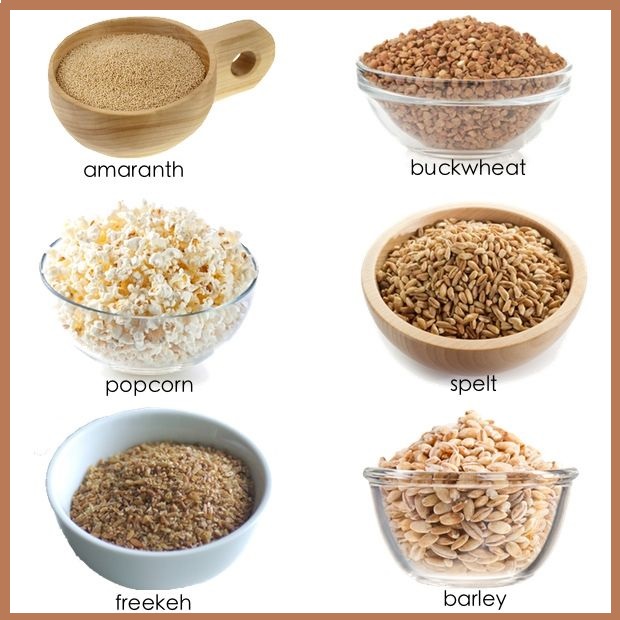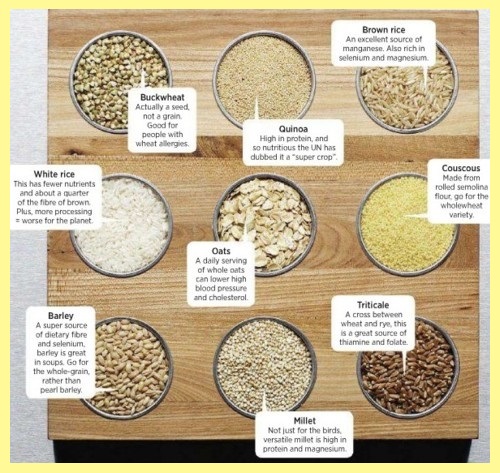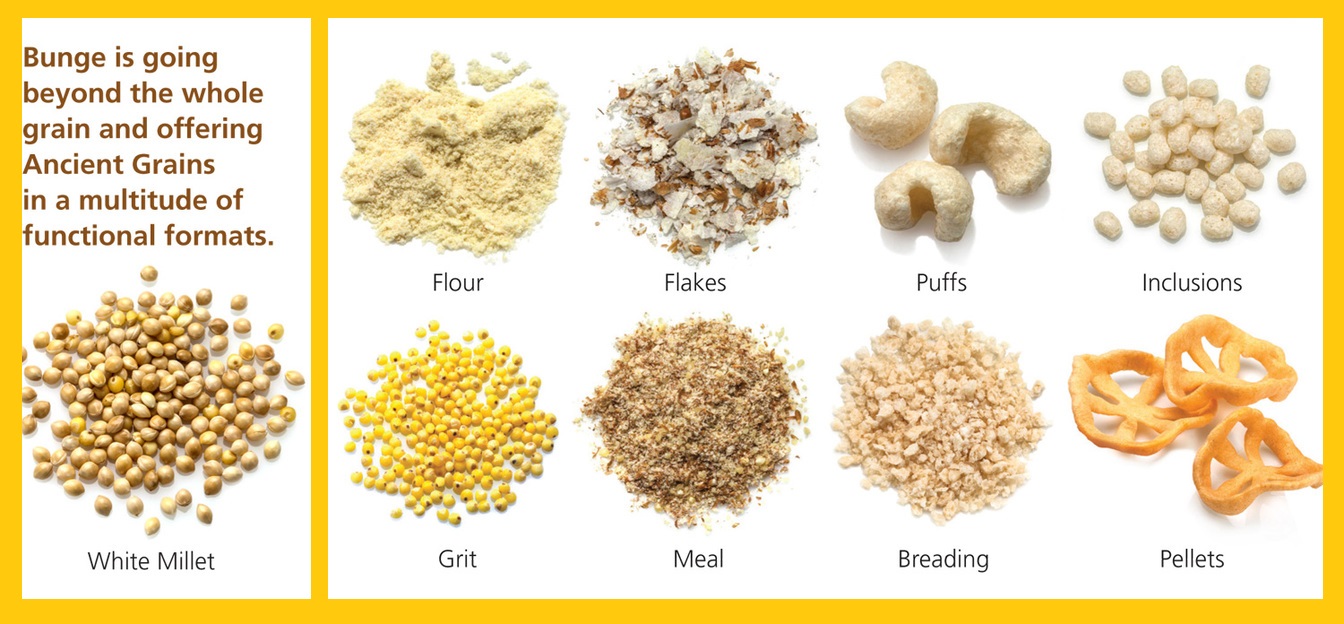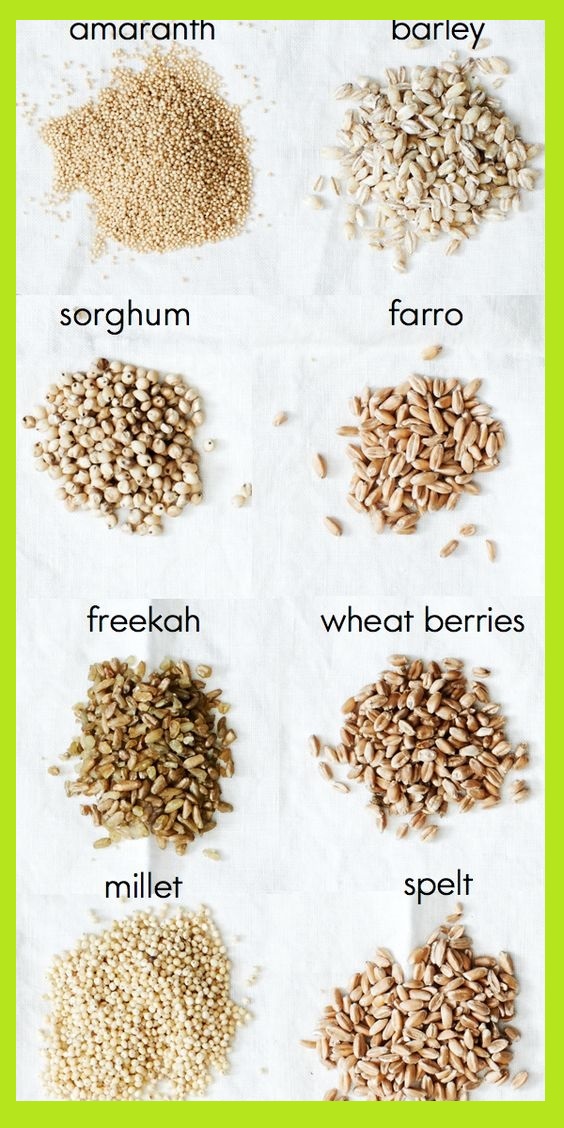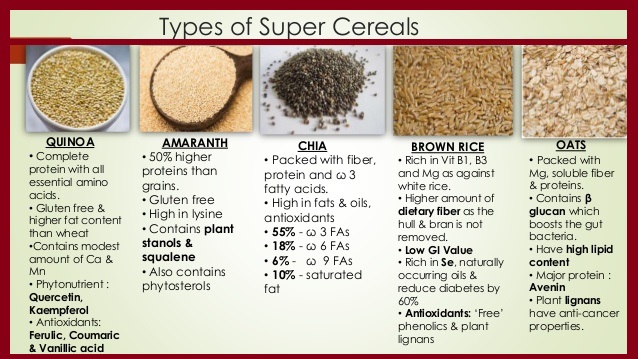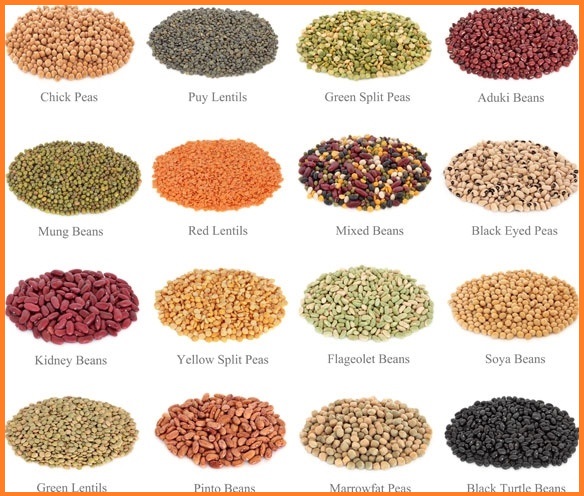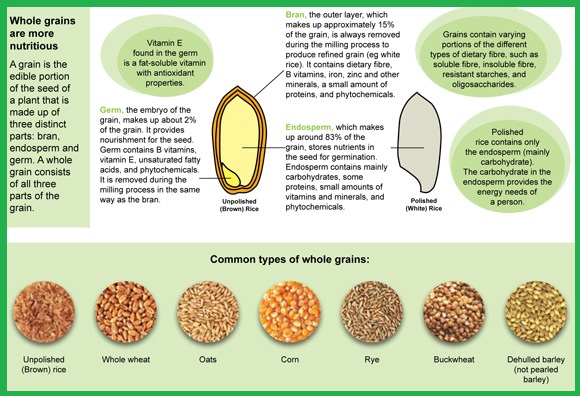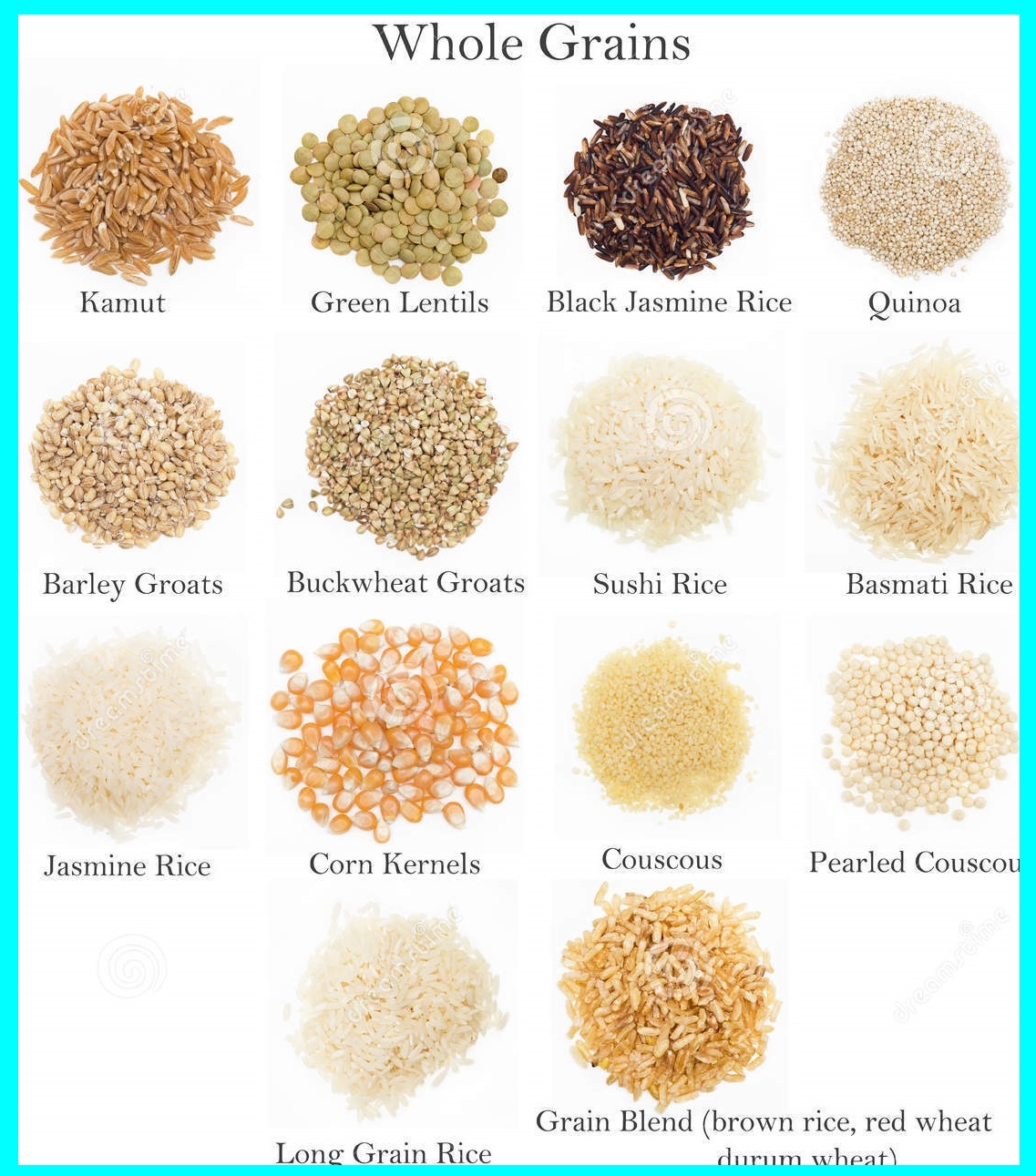GRAINS
WHAT ARE GRAINS?
TYPES OF GRAINS
Cereals
It’s grass, which are cultivated for its fruits called grains. Its fruits are composed of the endosperm, germ, and bran. They are also called staple foods because of their consumption and daily basic needs.
Example: Maize (corn), Pearl Millet, ProsoMillet, Sorghum, Barley, Oats, Rice
Pseudo-cereal Grains
These are plants and closely related to cereals. Cereals are pure grass but pseudocereals are not.
Example: Amaranth, Breadnut, Buckwheat, Chia, Cockscomb, Pitseed Goosefoot, Kañiwa, Quinoa, Wattleseed etc.
Legumes
A legume is a plant grown mainly for the fruit or seed.
Example: Soybeans, Peas, Peanuts, Carob, Beans, Lentils, Mesquite, Tamarind etc.
Whole Grains
They contain the entire grain kernel (the bran, germ, and endosperm) and are very nutritious.
Example: Farro, Oat, Barley, Quinoa etc.
Refined Grains
Counterparts of whole grains/ refined grains are processed in mills to remove the bran and germ, so they lack in nutrition. This is because refining normally removes the bran and the germ, leaving only the endosperm.
Example: Rice, wheat
BENEFITS OF GRAINS
Amaranth
It is a pseudo-grain.
Nutrients in Amaranth: It’s rich in lysine, iron, magnesium, phosphorus and manganese.
• Calories: 167
• Fiber: 3.0
• Protein: 6.10
• Gluten Free: Yes
Health Benefits of Amaranth
1. Contains squalene, a compound that may help to prevent cancer.
2. Anti-inflammatory properties
3. Anti-hypertensive properties.
Barley
FYI, it is a major cereal grain.
Nutrients in Barley: It is rich in fiber, manganese, niacin, and selenium.
• Calories: 159
• Fiber: 7.8
• Protein: 5.62
• Gluten Free: No
Health Benefits of Barley
1. lowers cholesterol
2. High in fiber
3. High in tocotrienols, that is helpful in heart health.
Brown Rice (Oryza Sativa)
It is rich is selenium, manganese and phosphorus
Nutrients in Brown Rice:
• Calories: 166
• Fiber: 1.6
• Protein: 3.57
• Gluten Free: Yes
Health Benefits of Brown Rice:
1. Easily-digested
2. Contains ethyl acetate which can help protect the heart
3. Decreases blood sugar levels
4. Anti-inflammatory properties
5. Aids in weight loss
6. Rich in antioxidants
Buckwheat
Buckwheat isn’t a type of wheat at all – it’s an herb.
Nutrients in Buckwheat: is rich in magnesium, copper and manganese
• Calories: 154
• Fiber: 4.5
• Protein: 5.96
• Gluten Free: Yes
Health Benefits of Buckwheat
1. Help lower cholesterol levels
2. Acts as a probiotic
3. Contains an antioxidant called rutin, which improves circulation
Bulgur
It is produced from wheat kernels. Wheat kernels are boiled, dried and cracked to get bulgur.
Nutrients in Bulgur: It is rich in magnesium and manganese.
• Calories: 154
• Fiber: 8.2
• Protein: 5.53
• Gluten Free: No
Health Benefits of Bulgur
1. Is high in nutrition
2. Has more fiber per cup than quinoa, oats, millet, buckwheat and corn. This helps in digestion.
3. No fat content
4. Cooks fast and has mild flavor
Corn (Zea Mays May)
Nutrients in Corn: It is rich in magnesium, phosphorus, manganese, and selenium.
• Calories: 163
• Fiber: 3.3
• Protein: 3.65
• Gluten Free: Yes
Health Benefits of Corn
1. Has the highest level of antioxidants of any grain or Veg.
2. Helps prevent cardiovascular disease, diabetes, cancer
Farro (Emmer)
Nutrients in Farro: It is rich in Zinc, magnesium and iron
• Calories: 170
• Fiber: 5
• Protein: 6
• Gluten Free: No
Health Benefits of Farro
1. High in fiber
2. High in minerals and magnesium
3. Contains cyanogenic glucosides(carb), which helps boost the immune system
4. Has complex carbohydrates which helps boost your energy levels
5. Relieves menstrual cramps
Freekeh (Roasted Green Wheat)
Nutrients in Freekeh:
• Calories: 150
• Fiber: 7
• Protein: 8
• Gluten Free: No
Health Benefits of Freekeh
1. 4 x the protein as brown rice
2. Low-fat content
3. Improves colon health
4. Low glycemic index
5. Calcium, iron and zinc
6. Rich in carotenoids and lutein
Kamut
Nutrients in Kamut: It has Zinc, thiamin, phosphorus, manganese, selenium and vitamin E.
• Calories: 152
• Fiber: 5.0
• Protein: 6.54
• Gluten Free: No
Health Benefits of Kamut
1. High in anti-oxidants
2. High levels of protein
3. Zinc
4. Magnesium
5. Boost immune system
6. Promotes thyroid function
7. Strengthens bones
Kañiwa
It is known as cousin of Quinoa
Nutrients in Kañiwa: High content of iron, calcium, and zinc.
1. Calories: 178
2. Fiber: 6
3. Protein: 7
4. Gluten Free: Yes
Health Benefits of Kañiwa
1. High in the antioxidant quercetin
2. High in protein
3. Contains all nine essential amino acids that our body cannot produce
4. High in antioxdants
5. Iron
Millet
Nutrients in Millet: Manganese
• Calories: 170
• Fiber: 3.8
• Protein: 4.96
• Gluten Free: Yes
Health Benefits of Millet
1. Helps control body weight
2. High in protein and antioxidants
3. Aids in lowering cholesterol
4. Aids in controlling glucose levels
Oats
Nutrients in Oats: Rich in manganese, magnesium, phosphorus and thiamin.
• Calories: 2 (For rolled oats: 171)
• Fiber: 4.5
• Protein: 5.92
• Gluten Free: Yes
Health Benefits of Oats
1. lowers cholesterol
2. Protects against heart disease and colon cancer.
3. Has unique antioxidant avenanthramides
Quinoa
Nutrients in Quinoa: It has Folate, magnesium, phosphorus, and manganese.
• Calories: 166
• Fiber: 3.2
• Protein: 6.35
• Gluten Free: Yes
Health Benefits of Quinoa:
1. Has all the nine essential amino acids the body can’t produce on it’s own
2. Is a complete protein
3. High anti-oxidants for
4. Aids in making you feel fuller
Rye
Nutrients in Rye: Rich in magnesium, copper, manganese, selenium and phosphorus.
• Calories: 152
• Fiber: 6.8
• Protein: 4.65
• Gluten Free: No
Health Benefits of Rye
1. Promotes feeling of fullness and helps in weight loss
2. Rich in antioxidants
3. Reduces mortality in men
Sorghum / Milo
Nutrients in Sorghum: It has Magnesium, Phosphorus and Vitamin B6
• Calories: 153
• Fiber: 3.8
• Protein: 5.09
• Gluten Free: Yes
Health Benefits of Sorghum
1. Gluten-free
2. Rich anti-oxidants
3. Decreases glucose levels
4. Has anti-proliferative activity against colon cancer cells
Spelt
Nutrients in Spelt: Iron, phosphorus, manganese
• Calories: 152
• Fiber: 4.8
• Protein: 6.56
• Gluten Free: No
Health Benefits of Spelt
1. High protein
2. Easy to digest
3. Good for people sensitive to wheat
Teff
Nutrients in Teff: Iron, calcium, vitamin C, magnesium, phosphorus, copper
• Calories: 165
• Fiber: 3.6
• Protein: 5.98
• Gluten Free: Yes
Health Benefits of Teff
1. Gives you a feeling of being full
2. Helps prevent colon cancer
3. High in iron
Triticale
Nutrients in Triticale: Folate, Zinc, Copper, Manganese, Magnesium, Phosphorus
• Calories: 151
• Fiber: 6.6
• Protein: 5.87
• Gluten Free: No
Health Benefits of Triticale
1. High fiber
2. Helps digestion
Wild Rice
Nutrients in Wild Rice: Iron, magnesium, phosphorus, copper, manganese
1. Calories: 161
2. Fiber: 2.8
3. Protein: 6.63
4. Gluten Free: yes
Health Benefits of Wild Rice
1. Gluten-free
2. High protein
3. Has the amino acid lysine, which help bone health
4. Helps in prevention of aerogenesis
Wheat Berries
Nutrients in Wheat Berries: Selenium, Manganese, phosphorus and folic acid
• Calories: 111
• Fiber: 4.3
• Protein: 3.5
• Gluten Free: No
Health Benefits of Wheat Berries
1. Anti-oxidants
2. lignin – helps protect against breast cancer
3. Makes you feel full
ADDITIONAL INFORMATION


